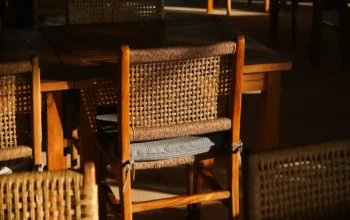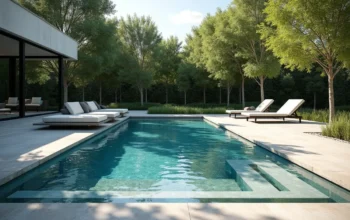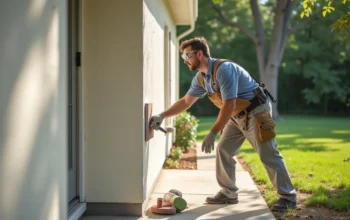
When planning landscapes, consider designs of retaining walls for support and erosion control. Whether you’re dealing with a slight incline in your garden or a severe drop-off outside your property, a well-planned wall will keep the terrain in place and add visual appeal at the same time. These structures can be built from various materials, allowing homeowners and professionals to get creative with both style and function. From modern block walls to rustic natural stone or warm wood retaining wall design, the possibilities are endless.
Contents
Why Strong Retaining Walls Matter
A sturdy wall safeguards your home and property from unwanted shifting of soil, which can lead to structural issues over time. In addition, these walls reduce the risk of costly damage by providing the necessary support against pressures caused by soil and water buildup.
Beyond their functional benefits, strong walls serve as decorative retaining walls that improve curb appeal. They can enhance a landscape by creating tiers, introducing new planting spaces, and blending seamlessly with existing garden wall ideas. This approach ensures both protection and style in any outdoor setting.
Sloped Yard Retaining Walls and Site Preparation
When building sloped yard retaining walls, it’s essential to pay close attention to site preparation. Proper slope stabilization requires clearing out debris and ensuring the ground is compacted, which reduces the chance of shifting or collapsing later. Consulting reliable resources or a local expert can help you determine the best slope stabilization and retention wall engineering methods for your project.
Next, establish the most effective route for drainage for retaining walls. Water buildup behind the structure can generate pressure that may undermine its integrity. Adding gravel backfill, drain pipes, or geogrid reinforcement keeps moisture under control and extends the wall’s lifespan.
Block Retaining Wall Ideas
Block retaining wall ideas often revolve around interlocking concrete blocks. These come in various shapes and finishes, fitting both contemporary yard designs and more traditional layouts. It’s a durable option that pairs well with different landscaping retaining walls plans.
Natural Stone Retaining Walls
A natural stone retaining wall offers timeless elegance. Stones like limestone or fieldstone bring an organic look to the yard, blending into the landscape architecture retaining walls seamlessly. In many cases, stone options can be quite cost-effective, especially if you source local materials.
Wood Retaining Wall Design
Using wood for a retaining wall can create a warm, rustic vibe. With pressure-treated lumber or resistant woods like cedar, you’ll enjoy a natural appearance that contrasts nicely with gardening beds or pathways. This approach is popular for DIY retaining wall tips, as wood can be relatively easy to install.
Retaining Wall Materials and Construction Methods
Retaining wall materials range from concrete blocks to natural stones, timber, and even steel. Each comes with different installation requirements, so it’s crucial to explore your options. Balancing cost, durability, and aesthetics narrows down the ideal material for your site. Some homeowners gravitate toward cheap retaining wall options like repurposed wood timbers or simple block designs to keep expenses low.
Retaining wall construction typically involves excavating the area, laying a solid base, and gradually building upwards. Gravity wall systems rely on their sheer weight for support, while reinforced soil structures incorporate geogrid reinforcement or tie-backs. Stepped retaining walls and terraced retaining wall designs are also ways of handling steep slopes by building multiple levels, reducing the load on each segment.
Modular Retaining Wall Systems
Modular retaining wall systems offer a convenient method for those seeking an efficient installation process. These systems typically use interlocking blocks that click together in a consistent pattern. They streamline construction and reduce guesswork, making them popular among DIY enthusiasts and professional installers alike.
Curved Retaining Wall Designs
For those looking to break free from straight lines, curved retaining wall designs present a dynamic way to soften the landscape. Curves add visual interest, especially when combined with decorative stone or color-tinted blocks. This style also works well for garden wall ideas where gentle arcs can accent flowerbeds and footpaths.
Incorporating Garden Wall Features
Introducing garden wall features into your project can bring new life to an otherwise straightforward design. For instance, adding planters or built-in benches creates seating and cultivates spaces for colorful blooms. These additions blend easily with existing landscaping retaining walls, offering both function and style.
Lighting fixtures can also be integrated into a wall to highlight architectural details. Consider low-voltage lights, solar-powered lanterns, or hidden LED strips to gently illuminate pathways. This personal touch can elevate your retaining wall while ensuring safe navigation at night.
Drainage, Erosion Control, and Safety
Effective retaining wall drainage solutions are essential for maintaining structural integrity. Overlooking drainage can lead to serious problems, such as cracks or total wall failure. It’s wise to include pea gravel behind the wall and incorporate proper vents or pipe systems to channel water away.
In terms of erosion control solutions, installing a layer of geotextile fabric between soil layers prevents mixing and speeds up drainage. Another concern is retaining wall safety considerations, such as ensuring the wall’s height adheres to local building codes. Talk to an engineer or utilize retaining wall design software for bigger projects to confirm the wall meets safety standards.
Creative Approaches for Aesthetic Appeal
Decorative touches can transform a standard structure into a conversation piece. For instance, tiered retaining wall plans allow you to incorporate multiple layers for planting or seating. This design approach adds depth and dimension to the yard, making the most out of limited space.
If you prefer a more natural or rustic retaining wall designs approach, consider mixing wood and stone for a balanced effect. Using localized rocks or reclaimed timber can speak to eco-friendly retaining wall designs that respect the environment while staying within budget. Textured finishes or colored stains also enhance aesthetic retaining wall finishes and fine-tune the walls to your style.
You might even introduce terraced walkways that connect different levels of the yard. This integration not only addresses retaining wall height considerations but also includes functional paths that guide visitors through the landscape. Meanwhile, smaller places can benefit from cheap retaining wall options and simple DIY solutions, like short wooden edges or repurposed concrete blocks.
In larger projects, combining landscape architecture retaining walls with a patio or water feature elevates the entire outdoor space. The key is to create a harmonious setting by balancing structural needs with personal taste. Feel free to break away from traditional shapes and let your creativity shine, whether that means using bright paints, carved stones, or even layering living plants directly into the wall structure.



